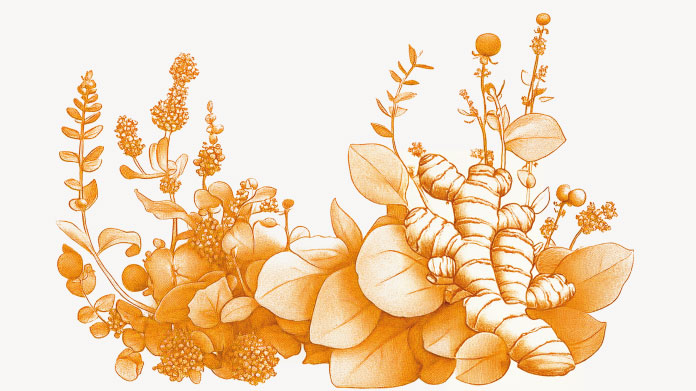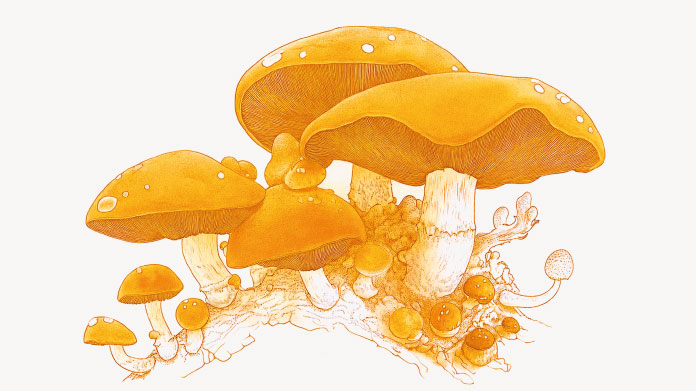Dust mite allergy: how to control the symptoms
They may be microscopic but dust mites are a huge problem for those who are allergic to them. Fortunately, there are a number of measures you can take to prevent, relieve and fight these allergic reactions.

Prevent the spread of dust mites in our homes and workplaces
Dust mites are everywhere. They are with us morning and night, at home and at work, following us wherever we go. To limit our exposure, it helps to understand the conditions in which they develop. Dust mites prefer a warm, humid atmosphere, conditions which are often present in our living and working environments, particularly in autumn and winter.
How? Clearly, controlling the temperature and humidity level in our homes and workplaces is a key step in preventing dust mite allergy. As a benchmark, it is advisable to maintain an average indoor temperature of 18°C and a humidity level of 40-60%. For that, you need to restrict your use of central heating, and radiator or air humidifiers. It is also a good idea to ventilate your home and workplace environments on a daily basis as it helps prevent the conditions conducive to dust mite proliferation.
Get rid of dust mites at home and at work
It’s hard to know whether dust mites have chosen to live with us. These tiny creatures, invisible to the naked eye, have taken up residency without our knowledge by feeding on tiny bits of human detritus such as hair, nails and dead skin flakes. That’s why dust mites are often found in dust, under the furniture, in carpets, rugs, mattresses and cushions.
How? There’s nothing like a major spring clean to prevent dust mite allergy. These tiny bugs get everywhere, so it’s important to tackle every nook and cranny. Particular attention should be paid to removing dust from furniture, carpets, sofas, armchairs and mattresses. Washing sheets and pillowcases regularly is also recommended for eliminating dust mites.
Take natural anti-histamines to relieve allergy symptoms
Your nose is running, you’re constantly sneezing, your eyes are itching… the symptoms of dust mite allergy can appear at any time and be really unpleasant. There are a number of specific treatments that can help you prepare for and guard against allergic reactions. Among them, natural anti-histamines are a popular choice. These are natural substances that help reduce the effects of histamine, the molecule responsible for allergic rhinitis.
How? For dust mite allergy, you can use a powerful natural anti-histamine like quercetin. Available as a nutritional supplement, quercetin not only exerts an anti-histamine action for combatting allergy but is also a powerful antioxidant protector and anti-inflammatory. Suffice to say that this natural substance offers significant benefits for defending the body!
Take traditional, natural remedies for relieving allergies
Dust mites are responsible for many respiratory allergies – and have been for thousands of years. Several natural anti-allergy remedies are found in traditional systems of medicine, particularly in the Chinese pharmacopeia and Ayurvedic texts.
How? Natural anti-allergy treatments are now available that are inspired by Chinese and Ayurvedic remedies, such as Aller-7® recommended for relieving respiratory allergy symptoms. This product combines a number of plant extracts used in Ayurvedic medicine such as amla (Phyllanthus emblica) and haritaki (Terminalia chebula). Formulated to minimise allergic reactions, the supplement Aller Fight contains plants from the Chinese pharmacopeia including the famous ginseng (Panax Ginseng). With its multiple properties, this Asian plant is regarded as a remedy for all everyday ailments.
Keywords
4 Days
Great customer service - responsive …
I ordered from them and my item was unavailable for sometime. I was super happy when they reactivated my order and shipped my item which arrived very quickly. Great customer service.
Ruth Rueter
5 Days
Super fast shipping
Super fast shipping
Donald Borling
8 Days
Reputable companysearch and the number of…
The research and the number of selection of products.
NAKHJAVAN Shervin
21 Days
The Anti Aromatase is a great product
The Anti Aromatase is a great product. You just need to have constant inventory. Recently this product has been out of stock.
GEORGE Verne
23 Days
Great help on chat
Great help on chat. Knowledgeable and friendly.
Jason Argos
26 Days
Customer service was fast and friendly.
Customer service helped to stop the transaction process of the subscription. I appreciated that.
Greenie
27 Days
I order here due to the high quality of…
I order here due to the high quality of the products and the quick delivery of items - thank you
Barbara J
28 Days
SuperSmart's Eye Pressure supplements: highly recommended!
I purchase SuperSmart's Eye Pressure supplements regularly for over 5 years, and gotta say they are truly a wonderful product for my Glaucoma. Highly recommended if you have eye pain from your Glaucoma.
D. Martinez
32 Days
Quick service
Quick service
MONELL
33 Days
Speedy service.
Speedy service.
ROSENTHAL Marvin
37 Days
Clear website- Efficient
Clear website. Excellent search engine and fast delivery!
Mohamad Hussein
39 Days
They have great products.
They have great products.
Vickie
40 Days
Great Shipping Time!
You Have A Great Shipping Time! Praise The Lord!
DMHoge
41 Days
Doctor Recommended!
Good pricing, very good availability, doctor recommended (couldn't find what I needed anywhere else), and it took only a week to arrive (which I can't complain about).
Al
42 Days
Great product and fast shipping
Great product and fast shipping
Marie





